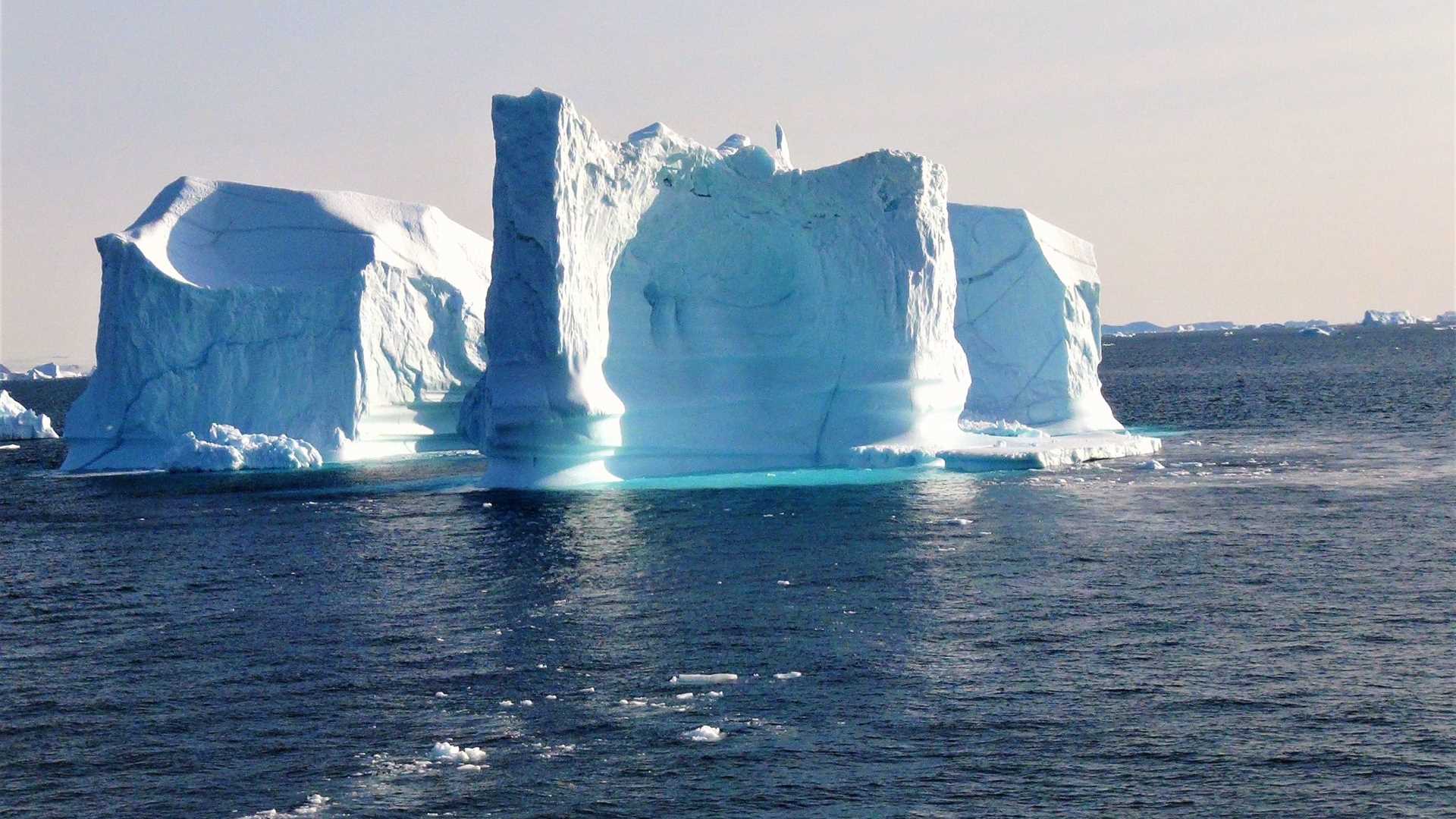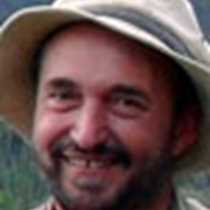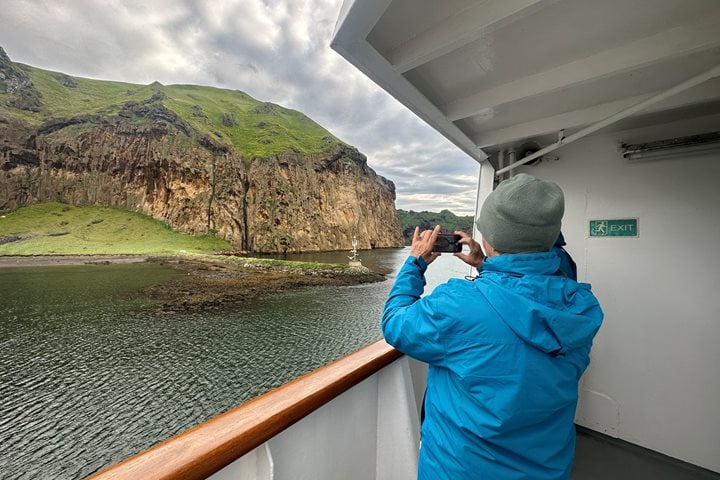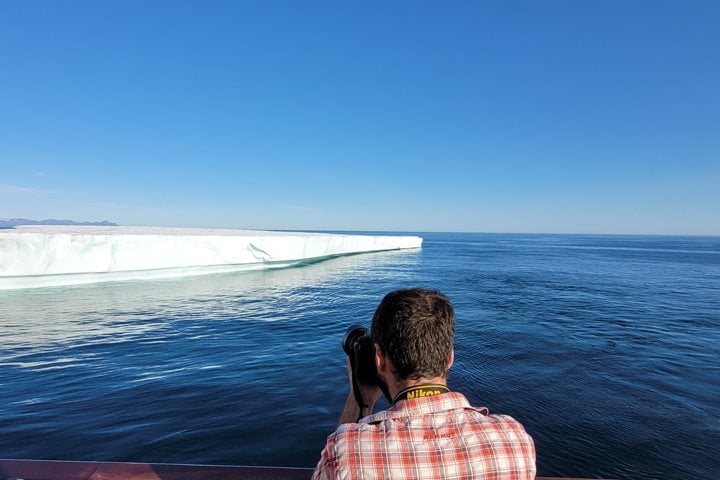During the night the sun dropped behind the horizon for the first time as the ship was sailing southward towards the Cape York. This morning we witnessed magnificent scenery stretching in all directions, with hundreds, maybe even thousands, of close and distant icebergs filling the line of the horizon and the Greenland coastline.
From time to time our expedition leader, Russ, made announcements inviting guests to go outside on the decks when we passed an iceberg of especially whimsical shape with arches, pillars, amphitheatres, sparkling pure white or exposing different grades of blue colours. The gallery of ice sculptures had no end.
As we approached Cape York we could see a tiny pillar on one of the coastal hills. This is a granite monument that was erected to memorialize Robert Peary, who it was claimed was the first person to reach the North Pole. There are some controversies about his claim though and some dispute he was the first to reach the North Pole.
In the late morning, the National Geographic Explorer arrived at Cape York and stopped in a broad bay. Softly rolling hills in the bay abruptly plunged into the sea as if they were broken off by a giant hammer. Glaciers and snow could be spotted on the hill tops. The color of the hill tops was strikingly different from the cliffs and other hill top areas. The difference in color is because of the presence of lichens that completely cover the long-exposed surfaces, which makes them look very dark regardless of the colour of the original rocks. Some hill tops were pink, as the main mineral they are made of is pink feldspar. These pink hill tops indicate that the glaciers that covered them melted very recently and the newly exposed rocks had no time for lichens to settle in.
Before lunch, guests took a Zodiac cruise among the dense labyrinth of huge grounded icebergs. Behind these icebergs, the ship looked small. We will remember this scenery for the rest of our lives. Our cameras were constantly clicking as new breath-taking landscapes kept appearing. Hundreds of little auks, one of the most common birds in the sea between Greenland and the Canadian Arctic islands, flew around us and plunged in the dark-blue water. There was a nesting colony of them at the cliff closest to us. A curious ringed seal emerged from the water close to our Zodiac, observed us for a few moments, and dove again.
A pleasant surprise was a hidden boat with ancient Scots serving hot chocolate with a tinge of liquor! The Scots, who curiously resembled some of the crew members of our ship, were welcomed warmly by everyone.
After lunch the ship proceeded further south and we had three presentations about the ecology, social structure and communication of marine mammals as well as the origin and life of icebergs. Niore Iqalukjuak, an Inuit photographer, presented a slideshow of his photographs of the Arctic.
For the last few days we have been at a narrow straight which has allowed us to see both Greenland and Canada’s Ellesmere Island at close distance. Late this evening, sailing southward, we entered a wider part of Baffin Bay and our last glimpse of Canada disappeared at the horizon line.







